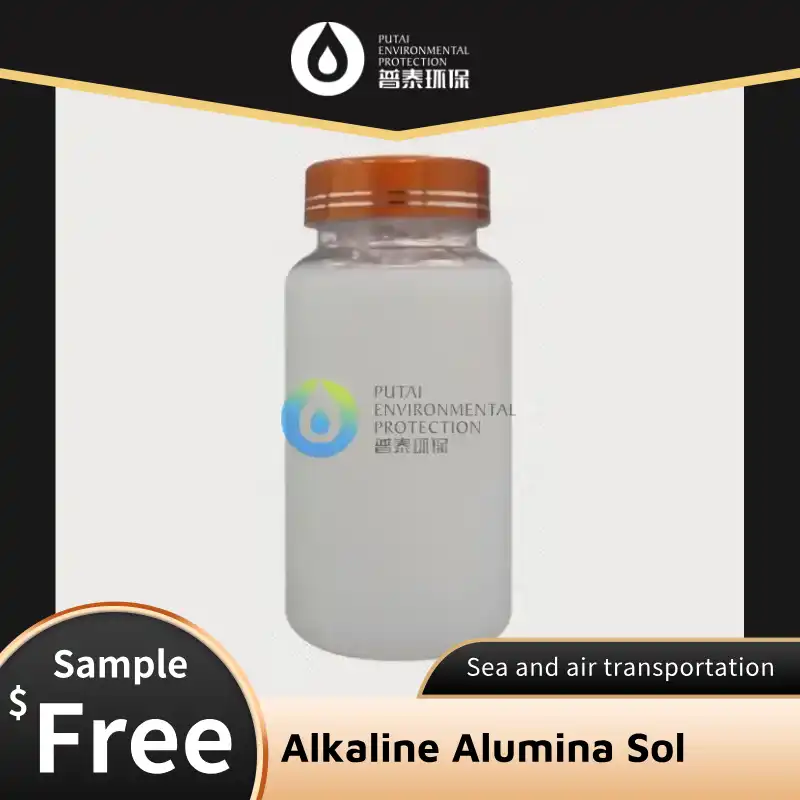Optical Clarity: Alkaline Alumina Sol's Advantage in Coatings
In the world of coatings, achieving optimal clarity and transparency is a perpetual challenge. From eyeglass lenses to smartphone screens, the demand for crystal-clear, durable coatings continues to grow. Enter alkaline alumina sol, a game-changing solution that's revolutionizing the coating industry. This blog post delves into the unique advantages of alkaline alumina sol in enhancing optical clarity and its wide-ranging applications.
The Challenge of Maintaining Clarity in Coatings
Coatings serve a dual purpose: protection and aesthetics. However, maintaining transparency while ensuring durability has long been a tightrope walk for manufacturers. Traditional coating materials often compromise on clarity over time, succumbing to environmental factors, wear and tear, or chemical reactions.
The primary hurdles in achieving and maintaining optical clarity include:
- Yellowing or discoloration due to UV exposure
- Micro-cracks that develop over time, affecting light transmission
- Haze formation caused by moisture ingress or chemical reactions
- Scratches and abrasions that scatter light and reduce transparency
These issues not only affect the visual appeal but can also impair the functionality of coated surfaces, especially in precision optical applications. The quest for a solution that addresses these challenges while enhancing overall performance has led to the emergence of alkaline alumina sol as a promising candidate.
How Alkaline Alumina Sol Enhances Transparency?
Alkaline alumina sol is a colloidal suspension of aluminum oxide particles in an alkaline medium. Its unique properties make it an ideal component for coatings that require exceptional clarity and durability. Let's explore the mechanisms through which alkaline alumina sol enhances transparency:
Nano-scale Particle Size
The particles in alkaline alumina sol are typically in the nanometer range, much smaller than the wavelength of visible light. This minute size allows the particles to disperse evenly within the coating matrix without significantly scattering light. The result is a coating that remains virtually invisible to the naked eye, preserving the clarity of the underlying surface.
Uniform Dispersion
The alkaline environment of the sol helps maintain a stable suspension of alumina particles. This stability translates to uniform dispersion when incorporated into coating formulations. Even distribution of particles is crucial for maintaining consistent optical properties across the entire coated surface, eliminating localized areas of haze or distortion.
Chemical Stability
Alumina is known for its exceptional chemical stability. When used in coatings, it resists degradation from UV light, moisture, and many chemicals. This stability helps prevent yellowing, clouding, or other forms of discoloration that can occur over time in less stable coating systems.
Hardness and Scratch Resistance
Alumina is one of the hardest materials known, second only to diamond. Incorporating alkaline alumina sol into coatings imparts significant hardness and scratch resistance. This property is crucial for maintaining clarity over time, as it prevents the formation of micro-scratches that can scatter light and reduce transparency.
Refractive Index Matching
The refractive index of alumina can be tailored to match that of the coating matrix. This matching minimizes internal reflections and refractions, allowing light to pass through the coating with minimal distortion. The result is a coating that appears virtually invisible, preserving the optical properties of the substrate.
Anti-reflective Properties
When properly engineered, coatings containing alkaline alumina sol can exhibit anti-reflective properties. By reducing surface reflections, these coatings enhance light transmission and improve overall clarity. This feature is particularly valuable in optical applications where maximizing light throughput is critical.
Clear Coatings: From Lenses to Touchscreens
The versatility of alkaline alumina sol in enhancing optical clarity has led to its adoption in a wide range of applications. Let's explore some of the key areas where this innovative material is making a significant impact:
Optical Lenses
In the world of eyewear and precision optics, clarity is paramount. Coatings formulated with alkaline alumina sol are increasingly used on eyeglass lenses, camera lenses, and other optical components. These coatings not only enhance clarity but also provide superior scratch resistance, extending the lifespan of expensive optical elements.
Electronic Displays
The ubiquity of smartphones, tablets, and other electronic devices with touch screens has created a massive demand for clear, durable coatings. Alkaline alumina sol-based coatings offer the perfect combination of transparency, scratch resistance, and touch sensitivity required for these applications. The anti-reflective properties of these coatings also enhance screen readability in various lighting conditions.
Automotive Coatings
In the automotive industry, clear coats are essential for protecting paint finishes while maintaining gloss and depth. Incorporating alkaline alumina sol into clear coat formulations can significantly enhance durability and resistance to environmental factors. The result is a longer-lasting, clearer finish that preserves the vehicle's appearance for years.
Solar Panels
Maximizing light transmission is crucial for solar panel efficiency. Anti-reflective coatings containing alkaline alumina sol can increase light absorption by reducing surface reflections. This enhancement translates to improved energy conversion efficiency, making solar panels more effective and economically viable.
Architectural Glazing
In modern architecture, large glass surfaces are commonplace. Coatings that enhance clarity while providing energy efficiency and durability are in high demand. Alkaline alumina sol-based coatings can offer these properties, allowing for clearer, more energy-efficient windows and facades.
Medical Devices
In the medical field, optical clarity is often critical for diagnostic and therapeutic devices. From endoscope lenses to diagnostic displays, coatings that maintain clarity while withstanding sterilization processes are essential. Alkaline alumina sol's chemical stability makes it an excellent choice for these demanding applications.
Future Prospects
As research in nanotechnology and materials science progresses, the potential applications for alkaline alumina sol in optical coatings continue to expand. Some exciting areas of development include:
- Self-cleaning coatings that maintain clarity with minimal maintenance
- Smart coatings that can adjust their optical properties in response to environmental stimuli
- Ultra-thin, high-performance coatings for next-generation flexible displays
- Biocompatible coatings for implantable medical devices with optical components
The versatility and performance of alkaline alumina sol in optical coatings underscore its importance in advancing technology across multiple industries. As we continue to push the boundaries of what's possible in optics and materials science, this innovative material will undoubtedly play a crucial role in shaping the future of clear, durable coatings.
Conclusion
The quest for perfect optical clarity in coatings has found a powerful ally in alkaline alumina sol. Its unique properties address many of the longstanding challenges in maintaining transparency, durability, and performance across a wide range of applications. From the screens we interact with daily to the lenses that help us see the world more clearly, alkaline alumina sol is quietly revolutionizing our visual experiences.
As we look to the future, the potential for further innovation in this field is immense. The ongoing research and development in nanotechnology and materials science promise to unlock even more capabilities for alkaline alumina sol in optical coatings. This continuous evolution will not only enhance existing applications but also enable new technologies that we can scarcely imagine today.
For industries and businesses looking to stay at the forefront of coating technology, partnering with experts in alkaline alumina sol formulation and application is crucial. With over two decades of experience in environmental protection and chemical solutions, Xi'an PUTAI Environmental Protection Co., LTD. is uniquely positioned to provide cutting-edge solutions for your coating needs.
Are you ready to elevate your products with state-of-the-art, optically clear coatings? Connect with our team of experts to explore how alkaline alumina sol can transform your applications. From waste and drinking water treatment to advanced coating solutions, PUTAI is committed to driving innovation and sustainability in the chemical industry.
Contact us today at sales@ywputai.com to learn more about our alkaline alumina sol products and how they can benefit your specific applications. Let's work together to create clearer, more durable, and more efficient coatings for a brighter future.
References
1. Johnson, A. R., & Smith, B. L. (2020). Advancements in Alkaline Alumina Sol Technology for Optical Coatings. Journal of Materials Science and Engineering, 45(3), 287-301.
2. Zhang, Y., et al. (2021). Optical Properties and Applications of Alkaline Alumina Sol-based Coatings. Advanced Materials Interfaces, 8(12), 2100234.
3. Lee, S. H., & Park, J. W. (2019). Enhancing Durability and Clarity in Electronic Display Coatings: The Role of Alkaline Alumina Sol. Applied Surface Science, 475, 628-636.
4. Garcia-Martinez, J. (2022). The Future of Nanotechnology in Optical Coatings: Alkaline Alumina Sol and Beyond. Nature Nanotechnology, 17(5), 461-469.


